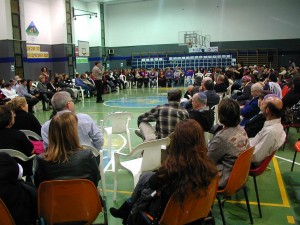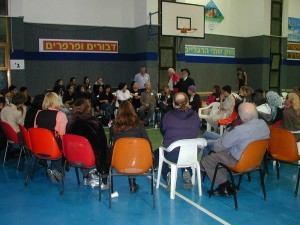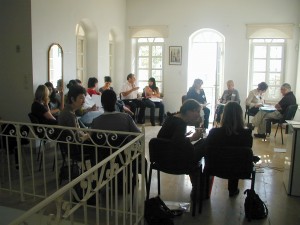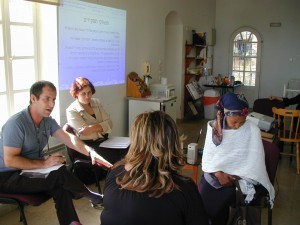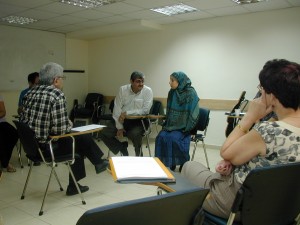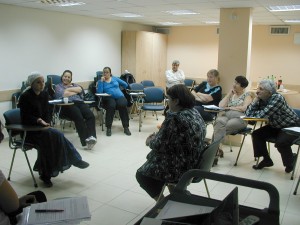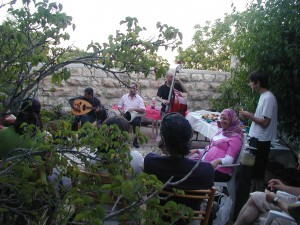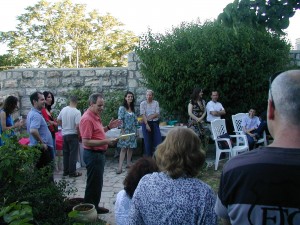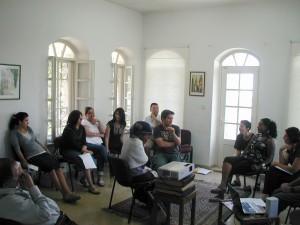Open Space Event in Gilo – November 16, 2009
Exactly one year ago, the Community Center director of the Gilo neighborhood, Yaffa Shitrit, and the neighborhood’s community organizer, Naama, visited us at the JICC and asked for our help in creating a community dialogue process in Gilo. In the year that followed, we helped them to begin with in forming an active steering committee that would lead the process and define the need and approach for a community dialogue process in the neighborhood.
The process was based on several years of groundwork for empowering local activists. While participating in a Community Dialogue course at the JICC in 2004, Yaffa presented a unique and novel course-design that would bring professional staff and community leaders together in teams. Since then she has been developing and implementing these courses in Gilo, and their graduates now became the solid base for the current large-scale community dialogue process in the neighborhood.
From month to month, under the impressive leadership of the Community Center’s staff, both the group of activists and the agenda for the process took form. During this process the activists formulated the agenda and title for the first community gathering: “How are WE going to Transform Gilo to Our Dream Neighborhood – Attractive, Fun and with Excellent Quality of Life”.
On November 16, the process was put to the test. An Open Space Technology event was conducted, based on the impressive marketing abilities of the steering committee. When we first talked about this event we assumed it might attract 150 participants. Well, 360 actually came !!!
After the introductions to the evening, working groups were formed, according to participants’ passion and leadership. The groups first discussed their topics and then focused on initiatives that they now took the responsibility to promote. Some of the groups were big – around 60 participants; others were small – 20, 5 or even 2 participants. But in an Open Space event – the size does not matter. The discussion summaries from all the groups were gathered toward a booklet of insights and initiatives that will be produced and distributed in the neighborhood. The air was full of energy.
The Community Center took upon itself the responsibility to help the residents and activists in promoting their initiatives. This will be the next phase of this community dialogue process.


